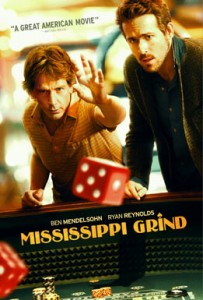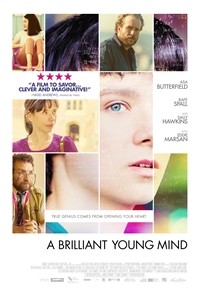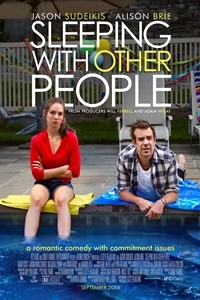 Bridge of Spies
Bridge of Spies
Starring: Tom Hanks, Mark Rylance, Scott Shepherd, Amy Ryan, Sebastian Koch, Alan Alda
Director: Steven Spielberg
by Michael Clawson of Terminal Volume
In the 1950s Americans lost their collective minds looking for communists. Many innocent people were caught up in the “red scare” and Joseph McCarthy’s televised witch hunt. Steven Spielberg’s Bridge of Spies is not about one of the innocent victims of the era, but an actual communist, a spy sent from the Soviet Union to steal American secrets in the event of — gulp — nuclear armageddon.
The Cold War does not have the sweeping appeal of World War II, or its tanks and soldiers blasting away at each other on panoramic battlefields, but it’s stories are just as revealing about the soaring heights (and plunging depths) of humanity, and the morality of a silent warfare that turned American against American.
In 1957, the United States government reached out to attorney James Donovan (Tom Hanks), an insurance lawyer in Brooklyn. They asked him to take the case of Rudolf Abel (Mark Rylance), a KGB infiltrator caught spying for the Soviets. They have Abel dead to rights, but they need a talented lawyer to defend him rigorously to keep up appearances that, indeed, America is a bastion of democratic, Constitutionally sound values and principles. Donovan agrees and is quickly stonewalled by a biased judges, a kangaroo court, an overzealous prosecuting attorney and a pitchfork-wielding public that sees Commies in its soup.
Presented as a legal procedural, the early segments of Bridge of Spies are expertly choreographed and fascinatingly presented. Here’s Donovan, doing Uncle Sam a favor, being spied on by Uncle Sam. Hanks, at his most feisty, has a great sequence with a CIA agent, who asks Donovan to violate attorney-client privilege by revealing what Abel actually did for the Soviets. The lawyer bristles at the request, and pounces. “Don’t nod at me and smile you son of a bitch,” Donovan tells the American spy. It’s wickedly fun, and Hanks hits all the right notes to get the audience on Donovan’s side, regardless of what his client has been accused.
In a concurrent sequence of events, four young pilots are being briefed on a new mission, one that will take them 70,000 feet up over Soviet Russia in a U2 spy plane. Gary Powers (Austin Stowell) is one of the pilots, and on his first flight encounters the loving embrace of Mother Russia. Powers and Abel quickly find themselves as pawns in a political game of chess that has global stakes. The players in the game are proxies, stand-ins who don’t have official status: for the Soviets it’s several communist-friendly power players, and for the Americans it’s Donovan, a pudgy Brooklyn insurance attorney whose wife thinks he’s fishing in England.
If you know history, you know what happens next, and it’s fascinating stuff, particularly when Donovan heads to East Germany to negotiate with his counterparts on the other side of the still-forming Berlin Wall. These scenes on the other side of the Iron Curtain are photographed in gloom, with cold colors and chilly concrete. The setting must have felt hopeless for Donovan, who’s robbed by a street gang, jailed by border guards and tactically outmaneuvered by an array of communist bureaucrats with conflicting of agendas.
Spielberg is known for his big movies — Raiders, Jaws, Saving Private Ryan — but I would argue that his smaller character-driven pictures show just as much mastery of the medium as the blockbusters. Here he tells a story about a man fighting for American ideals that America itself doesn't want to be bothered with. Hanks is terrific — when is he not? Rylance as the Soviet spy Abel is especially electric. He has a refrain that appears frequently, “Will that help?” You don’t seem worried about the death penalty, Donovan tells him in court. “Will that help?” Abel is a curious character, one that Rylance wraps in mystery and self sacrifice. Few actors can keep pace with Hanks, but Rylance does, and with apparent ease.
Mostly, though, Bridge of Spies is a collection of tiny victories: the lighting is nuanced and effective, the camera work is modestly unassuming, the sets and locations invoke the paranoia of the time and place, and the small details of East German life, such as an indoor hallway for bicycle messengers, gives the film its unique cinematic identity.
Spielberg makes too few movies, and it’s movies like Bridge of Spies that makes me yearn for more.

 “The foreclosure film ‘99 Homes’ serves stressful theatre”
“The foreclosure film ‘99 Homes’ serves stressful theatre”
 “He Named Me Malala” features an extraordinary woman in a less-than-perfect documentary
“He Named Me Malala” features an extraordinary woman in a less-than-perfect documentary
 The Final Girls
The Final Girls
 Interview – Adriana Trigiani, Jenna Elfman and Paul Wilson of “Big Stone Gap”
Interview – Adriana Trigiani, Jenna Elfman and Paul Wilson of “Big Stone Gap”



 “Mendelsohn and Reynolds are a pair of aces in ‘Mississippi Grind’”
“Mendelsohn and Reynolds are a pair of aces in ‘Mississippi Grind’”
 The Walk
The Walk
 The Martian
The Martian
 Sicario
Sicario
 The Intern
The Intern
 A Brilliant Young Mind
A Brilliant Young Mind
 Interview – Oren Moverman, director “Time Out of Mind”
By Jeff Mitchell
Interview – Oren Moverman, director “Time Out of Mind”
By Jeff Mitchell people. New York is quite an overwhelming city in terms of the mass volume of humanity in your face all the time. The more people there are, the more alone you can be. When you have so many people (in one place), then they (simply) do not see each other. So, I think the state of homelessness - that kind of isolation - leads to deprivation of very basic needs. The lack of eye contact or human contact just makes the problem worse for sure.
people. New York is quite an overwhelming city in terms of the mass volume of humanity in your face all the time. The more people there are, the more alone you can be. When you have so many people (in one place), then they (simply) do not see each other. So, I think the state of homelessness - that kind of isolation - leads to deprivation of very basic needs. The lack of eye contact or human contact just makes the problem worse for sure.  OM: That was our biggest worry: Are we going to get away with putting Richard Gere in this environment. We tested it. What we discovered – when we hid the camera, because we didn’t want the camera in people’s faces to give away the fact that we’re shooting a movie - is they didn’t recognize him at all because they didn’t look at him. It was a very deliberate, very understandable, very human, and a very New York approach. Urban dwellers would just walk past this homeless guy, and maybe someone would pay attention and maybe someone would give something, but ultimately no one looked him in the eye. It wasn’t as if he was unrecognizable as Richard Gere. He was unrecognizable as a movie star, for sure. He was unrecognizable in his clothes because that’s not how you would expect to see Richard Gere. The fact that no one looked him in the eye, it was a lesson for us when someone in that position becomes quite invisible to the people around him. He did get recognized twice in Grand Central Terminal when two people walked by him and said, “Hello”. It wasn’t sort of “Oh my God, it’s a movie star. Let me take a picture.” It was more like, “Hey, he looks like Richard Gere. It looks like he is having a hard time.”
OM: That was our biggest worry: Are we going to get away with putting Richard Gere in this environment. We tested it. What we discovered – when we hid the camera, because we didn’t want the camera in people’s faces to give away the fact that we’re shooting a movie - is they didn’t recognize him at all because they didn’t look at him. It was a very deliberate, very understandable, very human, and a very New York approach. Urban dwellers would just walk past this homeless guy, and maybe someone would pay attention and maybe someone would give something, but ultimately no one looked him in the eye. It wasn’t as if he was unrecognizable as Richard Gere. He was unrecognizable as a movie star, for sure. He was unrecognizable in his clothes because that’s not how you would expect to see Richard Gere. The fact that no one looked him in the eye, it was a lesson for us when someone in that position becomes quite invisible to the people around him. He did get recognized twice in Grand Central Terminal when two people walked by him and said, “Hello”. It wasn’t sort of “Oh my God, it’s a movie star. Let me take a picture.” It was more like, “Hey, he looks like Richard Gere. It looks like he is having a hard time.”  Black Mass
Black Mass
 Everest
Everest
 Sleeping with Other People
Sleeping with Other People
 The Visit
The Visit








